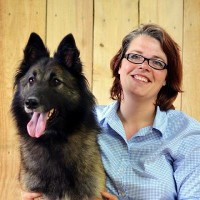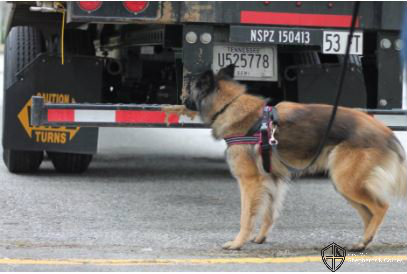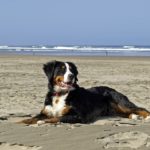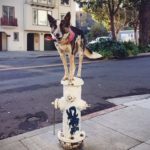The Herding Dog’s Advantage in Scent Detection Sports
Herding Dogs Excel in the “NEW” Venue of Scent Detection
It’s no secret that herding breed dogs excel when it comes to using their noses. Herding breeds are often used for tracking and locating humans in police activities such as search and rescue. Finding drugs, detecting firearms, and locating explosives are other areas where the keen nose of a herding breed dog is often employed. Training and working with a highly skilled detection dog is almost like magic; watching a dog “read” a scent and locate the source of the odor they are trained to find, is truly amazing.
In the past, if you wanted to train a dog in scent detection, you were most likely associated with law enforcement, military, or working in search and rescue. Several canine registries had tracking options, but the overall venue was fairly small. For the most part, only a small group of people were able to see dogs use their powerful sense of smell. Recently, however, a new opportunity for training and working dogs in scent detection has been developed and is offered all over North America by many registries, certifying bodies, and training clubs. Created for any dog and human partner, the sport is great fun … especially for herding breed dogs!
Nosework or Scent Detection - A Sport for Herding Breed Dogs
The sport is often called “Nosework” or “Scent Detection” and requires the dog to locate a Q-tip, scented with essential oils, that is hidden out of sight on a course, in a designated amount of time. Oil scent options include Sweet Birch, Anise, Clove, Wintergreen, and even Myrrh. There are tests, ribbons, and titles that a dog can earn as they participate in scent detection! Many people are satisfied just having a little game to play with their dog, and this sport is perfect for that as well.
Should you choose to compete, the venue or certifying body in which you choose to compete in dictates the odor that the dogs are trained and tested on. Most start with sweet birch, however in Canada, the dogs start with wintergreen. Regardless of the odor, it very important you have the EXACT species or scent that the dog will be looking for, otherwise it can confuse the dog. The essential oils are lightly applied to Q-tip cotton ends. These odor-laced ends are then put in small tins, tiny sleeves, or other itty-bitty containers to hide them from view and also prevent the oil from coming in contact with and contaminating the surface they are hidden on or in. The tins and tiny containers are placed on a course where they sit for a period of time (called cooking) before the dog and handler run the course to try and find the exact point of the hidden oil-laced Q-tips. Cooking the scent (the time it sits on the course, waiting) makes the scent spread like smoke and can make the scent easier or harder to find, depending on the temperature and conditions.
Courses can include indoor rooms, containers (anything that can hold a scent tin or sleeve is a container - be creative!), vehicles, and exteriors of buildings. In a competition, the scent tins and sleeves can be hidden almost anywhere and it is almost impossible to see them as they are so well hidden. Designated people ensure the hide is legal per the rules of the venue and that it is not seen by the handler or dog running the course. Handlers and dogs walk into the course with no idea where the odor is placed. Typically there is some kind of start line and the search area is roped off or marked. The team starts their search and the dog starts sniffing! Hopefully the team finds the source of the odor on their own, but even if they don’t, they are taken to the hide and can be generously rewarded with treats and praise!
Searching for odor takes training, finesse, and a lot of patience. Dogs must learn value for the odor through training and handlers must learn to watch their dog’s behaviors for subtle cues that the dog is “in odor”. There are many ways a team can start this sport. Typically, treats are paired with the odor to build a sense of value for the odor. When dogs find the odor, they get a treat and before too long they associate the odor with high reward. They develop an “indication” or behavior that they do in the presence of the odor which the handler must learn to identify and “read”. The handler tells the judge that the dog located the odor on the course and it is that location or call that the team is “graded” on.
Besides the benefit of working with your canine partner to learn a new skill, scent detection can be done practically anywhere. In the Northeast, I can spend all winter training in rooms of my house, the garage, or in the basement - it’s great! The sport gives busy dogs something to do and is great for older dogs that need a less active sport to pursue. Dogs with reactivity or dogs that have issues with other dogs can do very well in specific Nosework venues that understand certain dogs need distance. Dogs that lack confidence or focus can blossom in this sport. Regardless of whether you want to compete or not, canine scent detection can offer lots to you and your dog! It’s like canine hide and go seek!
If you are interested in giving this “game” a try with your herding dog, there is a lot of information out there on the internet. Read as much as you can about the sport, then try and find a trainer local to you that specializes scent detection. You can learn the proper way to start and also what different venues are out there. A good trainer will get you off on the right foot!
Read the Top 5 Indoor Activities for Your Athletic Dog, by Evangelist Rachel Sheppard, for more great information (and a video!) on Nosework, as well as other fun activities you can do with your herding breed dog.
If your herding breed dog loves using his nose to find a treat, a person, or a toy and you want to develop this game into something more regular and challenging, try canine scent detection. You will enjoy it and your pup will thank you!
Article By:
Eva Raczka
Meet Our Evangelist

Article image from Eva Raczka: Pi (a Belgian Tervuren) looks for Birch on the bumper of a trailer in a Performance Scent Dogs trial. March 2016







